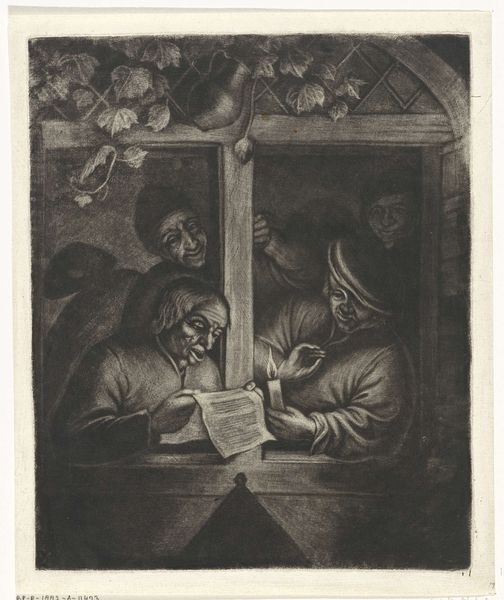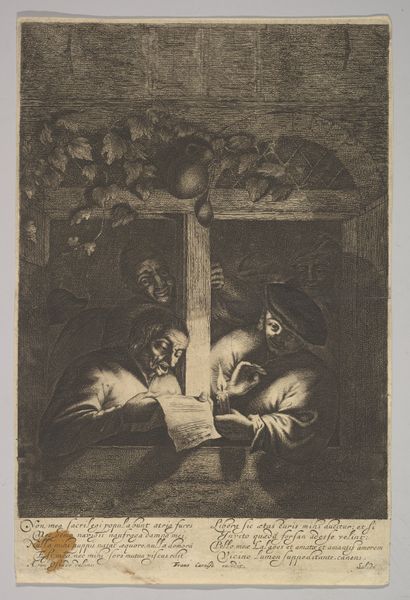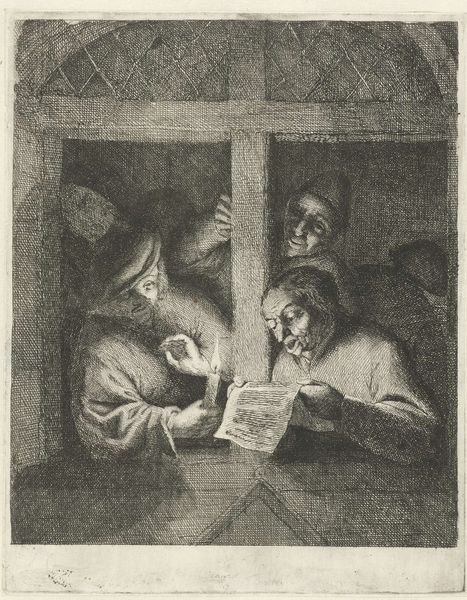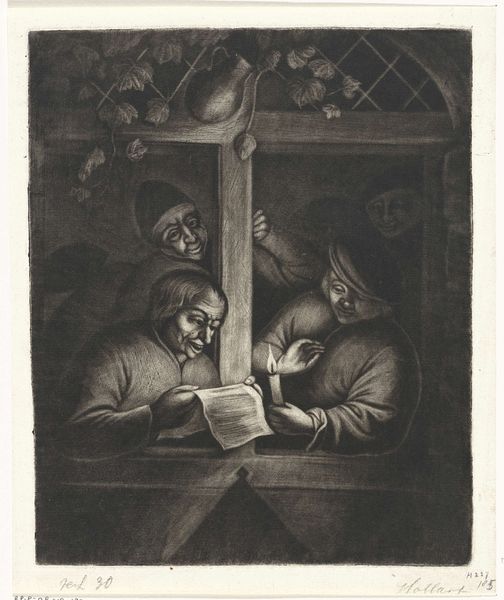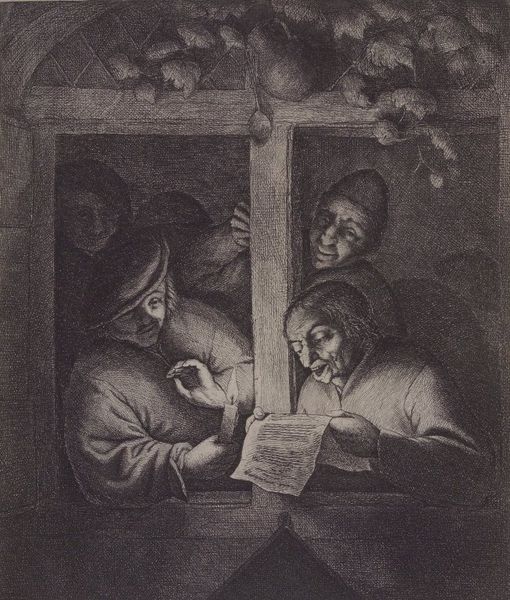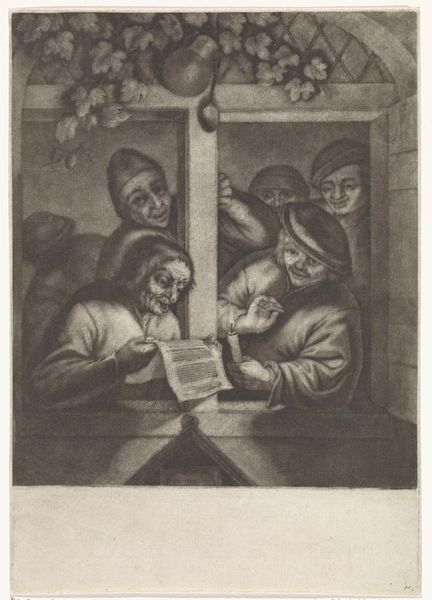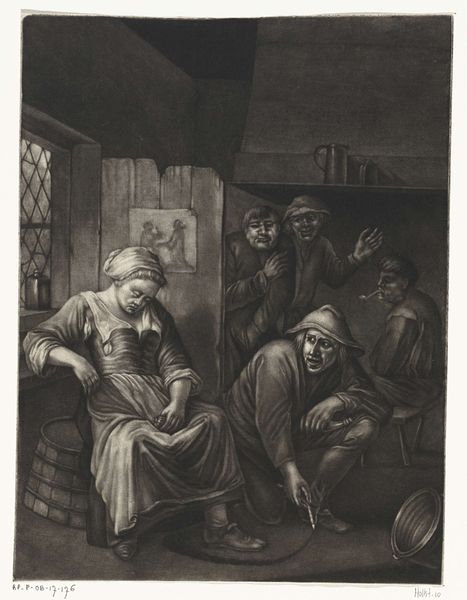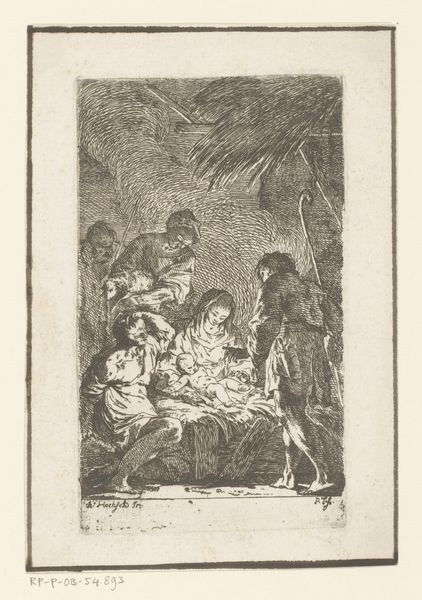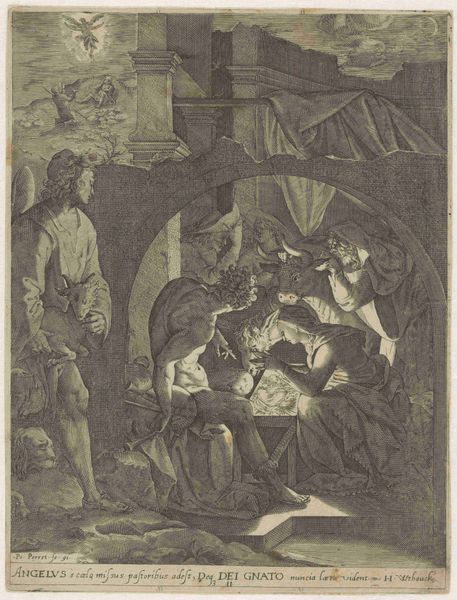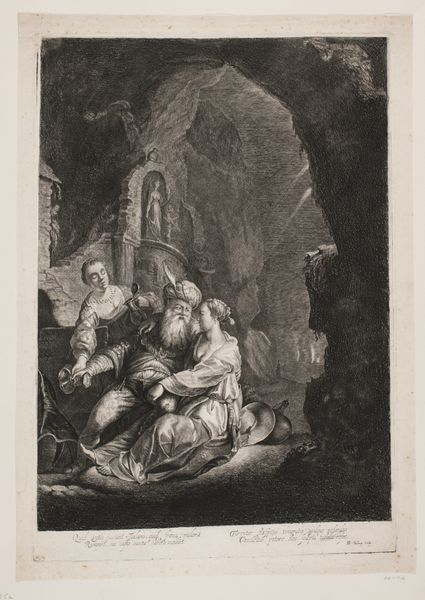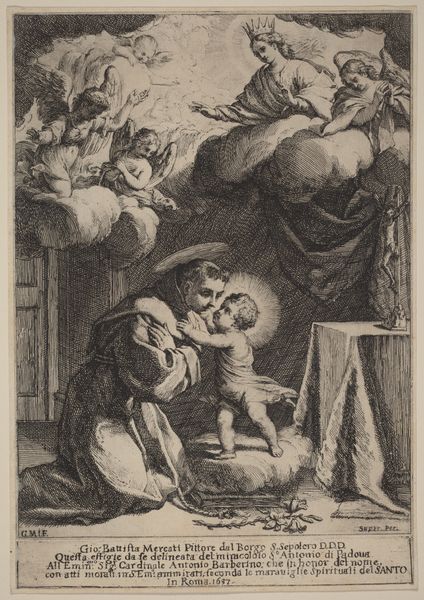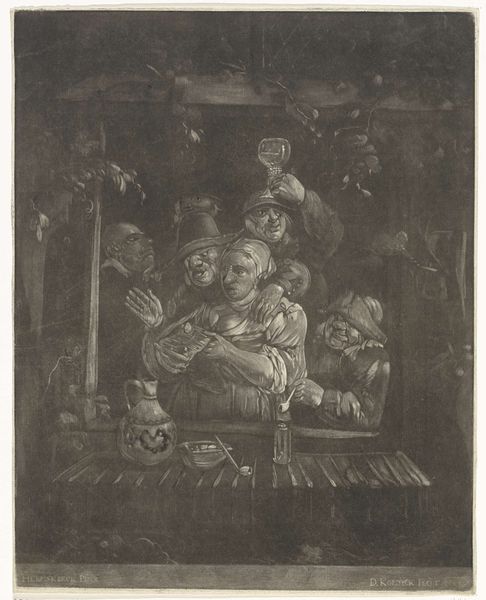
drawing, print, etching
#
portrait
#
drawing
#
baroque
#
dutch-golden-age
# print
#
etching
#
genre-painting
Dimensions: Sheet: 9 9/16 × 7 1/2 in. (24.3 × 19 cm)
Copyright: Public Domain
Curator: Here we have Adriaen van Ostade's etching, "Singers at the Window," created sometime between 1610 and 1685. Editor: It has such a wonderfully moody atmosphere! The figures crammed into that window frame, lit by what seems like candlelight... It's so intimate, but almost voyeuristic. Curator: Ostade was a master of genre scenes. In this period of Dutch Golden Age painting we're seeing an emphasis on everyday life and, with it, all its complex narratives regarding the emerging middle class. Here, we’re positioned outside the scene looking in—which puts us as silent observers, while simultaneously positioning these men as performers. Editor: I find the etching medium perfect for capturing the grittiness of daily life. It allows the artist to achieve incredibly fine detail alongside dense shadow. I'm also intrigued by the casualness of their dress—it makes me wonder, were they peasants, townspeople, and who would have commissioned such an artwork? Curator: Looking through a postcolonial lens, it invites conversations around representation. How are these men portrayed? What assumptions about class or labor might have influenced both the artist and the audience of this work? How much is staged for a public viewing and how much captures an ordinary event? Editor: Well, I would push back on this assumption by pointing out the clear effort invested in its creation—the carefully observed facial expressions, the textural variation achieved with the etching. There is clearly a market at play for a consumer eager to gaze upon scenes that either represent their lives or portray a class they can aspire to rise beyond. We could also note that at the top we see a flagon and what looks to be a cooking spoon. The composition hints that in their lives, labour, food preparation, consumption, and song exist harmoniously within the daily grind. Curator: Those domestic props at the window are a vital touch. In terms of artistic influence, we can easily align this work with others from that time such as Jan Steen, known for scenes from daily life that frequently depicted tavern visits, celebrations, domestic chaos and more. With all these social signifiers—domestic, commercial and even leisure—it all comes together to offer a glimpse into both the realities and perhaps a carefully mediated portrayal of its realities. Editor: It makes one ponder the skill and labour involved in both music making and creating such works of art to disseminate throughout 17th-century Dutch society. Curator: It really does make you reflect on that relationship between subject and maker. Editor: Precisely.
Comments
No comments
Be the first to comment and join the conversation on the ultimate creative platform.
